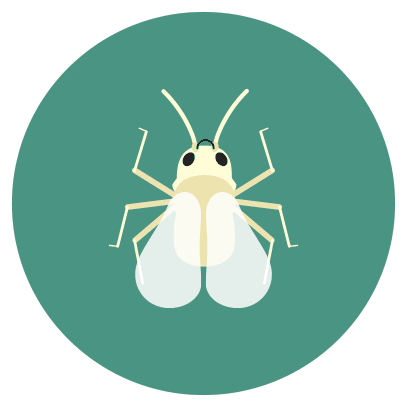TROUBLESHOOTING
WHITE FLIES
WHITE FLIES
WHAT TO LOOK FOR:
Whiteflies are tiny white bugs, only around 1/16” to 1/10“ long. They tend to appear in clusters on the underside of leaves around the veins of the leaf. The leaves of the plant can start to turn pale or yellow in color, and start to wilt. Though not true flies, the adults do have wings and can fly. Whiteflies are active in the daytime, so you may notice tiny light-colored insects flying around under the leaves.
HOW IT HURTS:
Whiteflies eat the sap from the phloem of tomato leaves. By doing so, they divert sugars and nutrients that the plant needs for photosynthesis. This then harms the plant’s ability to get nutrients and convert sunlight. If left alone, whiteflies can keep your plant from growing and thriving, and also leave the plant exposed to disease.
HOW TO HELP:
It is not recommended to use synthetic or harmful pesticides — especially inside! You don’t want those kinds of chemicals on the food you eat, or to breathe them in if you spray inside your home. Outside, pesticides (including organic ones) can harm beneficial insects such as bees, so it’s best to use sparingly — or try to find other methods.
Use insecticidal soap:
Either buy an organic insecticidal soap, or create your own by combining 2.5 tablespoons of vegetable oil and 2.5 tablespoons of liquid dish soap (such as Dr. Bronner’s Pure-Castile Soap) with 1 gallon of distilled water. Put the soap into a clean and empty spray bottle and spray the entire plant (including both sides of the leaves!) Re-apply if your plant is outside and has been rained on.Use neem oil:
Neem oil is a naturally occurring pesticide created from the seeds of the neem tree. It can be strong smelling and would be better for outside applications. You may need to re-apply if your plant is outside and has been rained on.Use yellow sticky traps:
You can purchase yellow sticky traps online, through a local home improvement store or plant nursery. These work by trapping flying insects in a sticky substance. Be aware that sticky traps can trap beneficial bugs as well.

